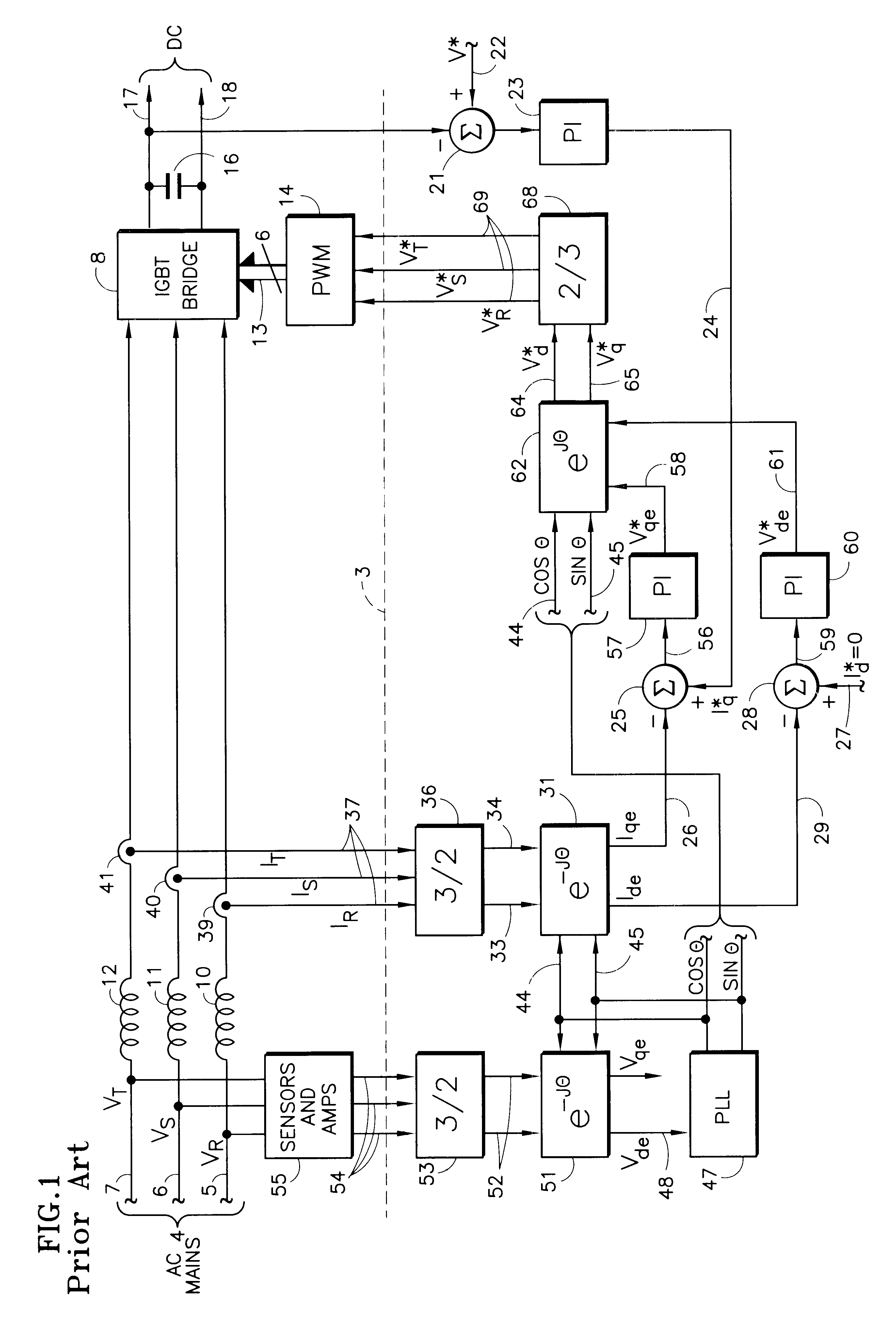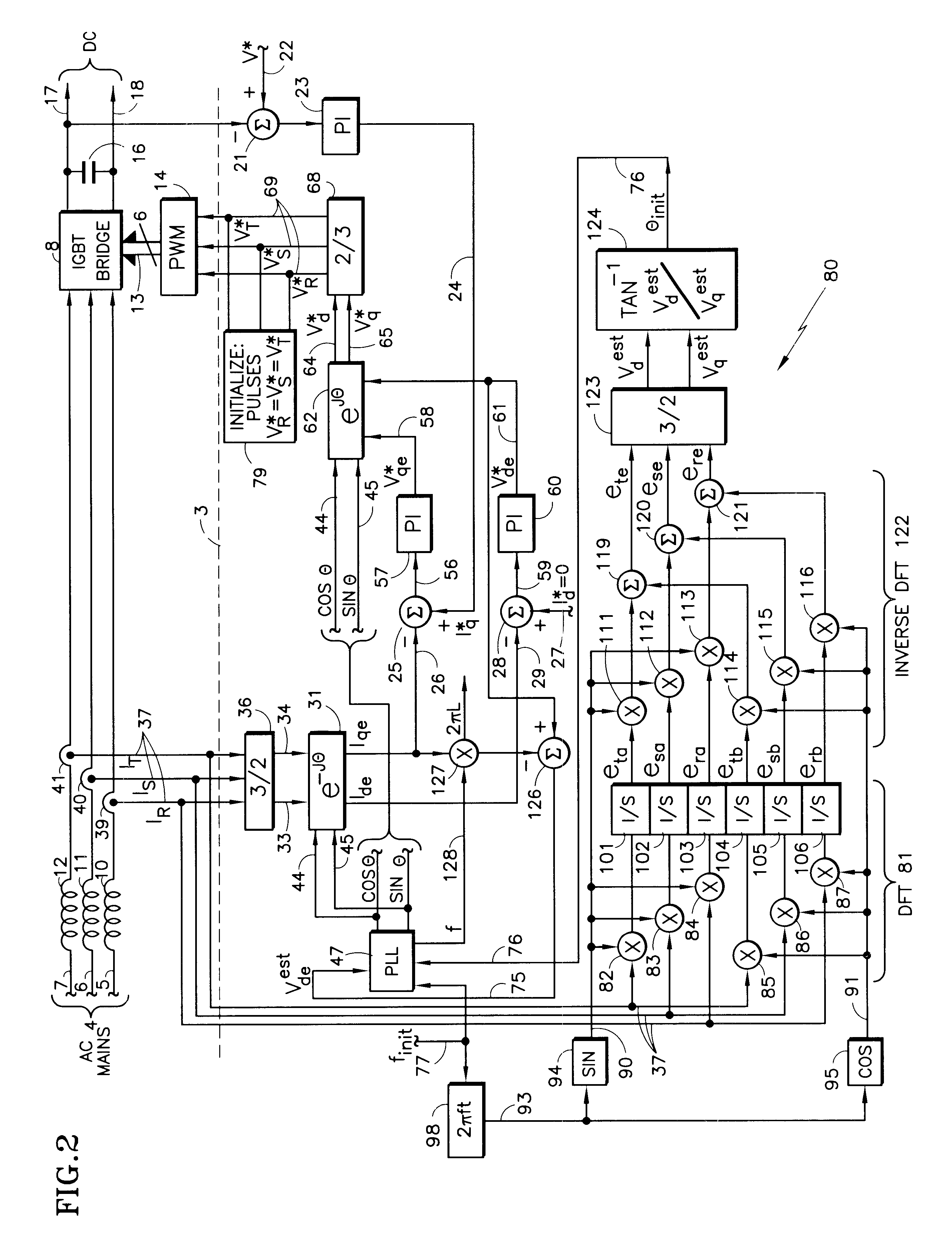Determining phase of AC mains in PWM controlled converters without voltage sensors
a technology of voltage sensor and ac mains, which is applied in the direction of ac-ac conversion, power conversion system, conversion with intermediate conversion to dc, etc., can solve the problems of increased system cost due to additional required components, reduced reliability, and increased number of components
- Summary
- Abstract
- Description
- Claims
- Application Information
AI Technical Summary
Benefits of technology
Problems solved by technology
Method used
Image
Examples
Embodiment Construction
In FIGS. 1 and 2, the functions illustrated above the dotted line 3 are provided by hardware, whereas the functions illustrated below the dotted line 3 are provided by software, as is conventional.
Referring to FIG. 1, the AC mains 4 include R, S and T phases 5-7 as is known. The AC mains 4 are applied through line inductors 10-12 to a conventional insulated gate bipolar transistor bridge 8, which receives six different switching signals over lines 13 from a conventional pulse width modulation controller 14. The bridge 8 provides regulated DC voltage to a power capacitor 16 and a pair of output lines 17, 18.
A signal indicative of the DC voltage of the line 17 is applied to a negative input of a summing function 21, the positive input of which is the desired or commanded voltage V* on a line 22. In an elevator system, this command is provided by the motion controller; in other systems, other commands may be used. The difference is applied to a proportional and integral controller 23 w...
PUM
 Login to View More
Login to View More Abstract
Description
Claims
Application Information
 Login to View More
Login to View More - R&D
- Intellectual Property
- Life Sciences
- Materials
- Tech Scout
- Unparalleled Data Quality
- Higher Quality Content
- 60% Fewer Hallucinations
Browse by: Latest US Patents, China's latest patents, Technical Efficacy Thesaurus, Application Domain, Technology Topic, Popular Technical Reports.
© 2025 PatSnap. All rights reserved.Legal|Privacy policy|Modern Slavery Act Transparency Statement|Sitemap|About US| Contact US: help@patsnap.com



